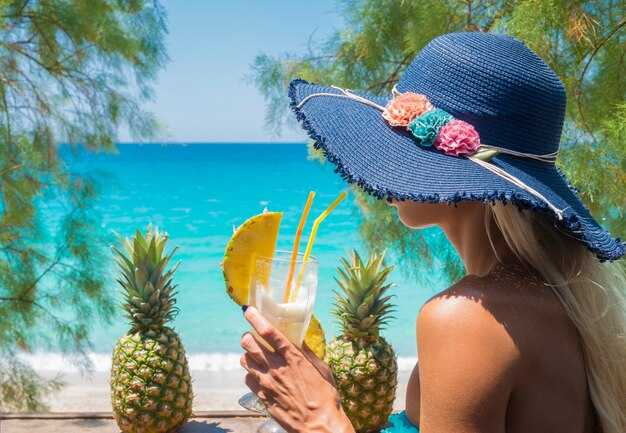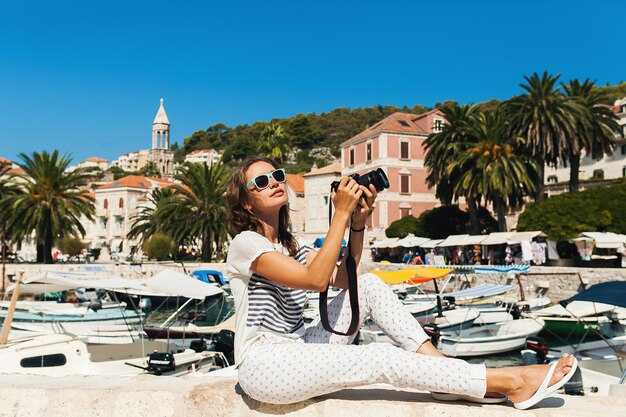Plan a Palma base for the first week and schedule two longer day trips to the Serra de Tramuntana and the southeast coast. From a month-long stay, I learned that balancing city strolls with nature hikes reveals Mallorca’s true rhythm and helps you notice details you miss from a bus window.
In this article, you’ll find 35 moments and ideas grouped into three themes: scenery, culture, and cuisine. I describe practical routes, estimated times, and where to find shade, water, and rest stops between visits to coastal coves and mountain villages.
For scenery, start with a sunrise walk along the cliffs near Cap de Formentor, then ride the historic tram to Sóller and wander the harbor. For culture, stroll Palma’s old town at dawn and explore Valldemossa’s quiet streets; stay long enough to hear bells from a local church. For cuisine, sample fresh tomato pa amb oli, bread baked in family ovens, and small desserts from tiny bakeries.
チップ: start days early to beat crowds at popular beaches such as Es Trenc and Cala Comtessa; park in designated zones, carry water, and wear reef-safe sunscreen. If you rent a car, plan routes that minimize backtracking; if you prefer two-wheeled travel, the train or tram links Palma with nearby towns and offers scenic passes.
These notes came from a month of exploration and a few late-night chats with residents, tasting coffee and listening to stories in small squares. The result is a flexible, practical approach to discovering Mallorca that you can adapt to any season, any pace, and any budget.
Design a 4-week Mallorca itinerary to cover 35 unforgettable experiences
Book a private sunrise session at Formentor on Day 1, then follow a four‑week plan that packs 35 unforgettable experiences into a steady rhythm. Expect scenic coastlines, hillside villages, vineyards near Binissalem, coves, and island flavors, all organized with simple logistics and flexible days.
Week 1: Coastal Classics
Begin with a scenic drive along the northwest coast through walls of limestone and rows of white houses perched above the sea. Pause at Cap de Formentor for a tower overlook, then descend to the beach for a refreshing swim. In Portals Nous, stroll the harbor and grab a light lunch, then drift to Santa Maria for a hillside walk and a meal in a town that feels timeless. Walk the old town walls of Alcúdia and Pollensa, then chase coves along the southeast coast for a dip and photos with turquoise water. Taste wine on a Binissalem vineyard with guides who share the region’s history, and end the day with a quiet sunset from a cliff seat overlooking the sea. Include a private visit to a small site with private portals set into the cliffs for a surprising photo stop. This week offers lots of chances to capture beach moments, dramatic overlooks, and family‑friendly strolls.
Example day: Cap de Formentor sunrise, Portals Nous harbor walk, Alcúdia walls and arches, Es Cavallet‑style coves, and a vineyard tasting near Binissalem, finished with a sunset seating view from a seaside site.
Weeks 2–4: Inland Delights
Beginning with a historic tram ride to Sóller, then a short transfer to Deià where a private guide reveals hillside terraces and rugged scenery. In Binissalem, visit a vineyard for a guided tasting and a conversation about local varietals, followed by lunch that pairs with regional cheese. Stop at a cafe with indústria vibes for a quick break, then wander through Santa Maria’s lanes and walls before a sunset from a hilltop overlook. Meet Andreu, a local guides specialist from Santa Maria, who shares a snapshot of island life and leads a short walk to a nearby winery for a second tasting. Afterward, drive the Serra de Tramuntana route through pine and stone to a secluded cove for a quiet swim, then watch the sun dip behind the tower above the coast. The week favors a couple or small group with flexible options: extra time in Sóller, more vineyard tastings, or a guided walk along quieter paths through villages with stone houses and church bells.
Week 3 emphasizes coves, caves, and coastline icons. Take a morning to visit Sa Calobra and the Torrent de Pareis gorge, then relax at Cala Varques or a sheltered cove with clear water. A guided visit to the Caves of Drach or a nearby stalactite site adds a dramatic cave experience. In the afternoon, a short hike through olive groves leads to a scenic overlook where the sea stretches to the horizon–ideal for a couple’s photo highlight. Revisit Santa Maria for a light supper and a conversation with a local guide who shares a short history of the island, then end the day with a sunset at a lighthouse tower that frames the horizon.
Week 4 consolidates flavors and slow explorations. Schedule a late‑morning market visit, a hands‑on cooking class with a local family, and a final vineyard stop near Binissalem for a last tasting. Take a relaxed loop through Port de Sóller and Port de Pollença, with a beach break on a quiet cove and a final, private beach seat to reflect on the trip. Close with a farewell sunset in Palma, perhaps from a hilltop site that offers a panoramic view of the rooftops and cathedral tower. Throughout these days, you’ll have the chance to experience private meals, tiny galleries, and a parade of colors along charming streets. The result is a rich mix of landscapes and moments that feel personal, simple, and memorable.
Visit the Royal Palace of La Almudaina: best times to go, ticket tips, and must-see interiors
Book reservations for the first morning slot to enjoy calmer interiors before the palace fills up. La Almudaina is an established royal residence, so an early arrival today helps you plan and capture the grand spaces without crowds.
Best times to go are in april and during spring or early autumn, when temperatures are cool and pleasant. Early mornings offer a panoramic view over palma and the harbor, and the light is gentler for photos, even on cloudy days. If you love it, revisit later in april for a quieter experience.
Buy tickets online to save time and use the timed-entry system, which makes entry easier. Whats included varies by season, and reservations are often available through Mallorca’s official network. An exception: some days offer extended hours during local celebrations. Bring water and a small fruit snack to stay energized, and if possible, look for a combined ticket with nearby sites and plan ahead.
Inside, the interior spaces combines antiguo fortress heritage with classical decoration. Highlights include the Sala del Trono (Throne Room), an ornate armory gallery, and the restored royal chapel. The rooms feel like a beautiful mansion that carries a manor vibe, crafted by artisan hands.
Regardless of crowds, plan a compact route to avoid fatigue: start on the terrace for a panoramic first impression, then move through the throne room, the armory, and the chapel; throughout, take short breaks in the cool courtyards. If you’re in palma today, consider a short drive to santanyí for artisan markets and a different day.
Taste Mallorca like a local: top markets, tapas routes, and regional specialties
Plan a morning at Mercado de Santa Catalina in Palma, the capital, sample ensaimada and sobrasada, and sip a cortado while joan, a longtime stallholder, offers courtesy; the sight of sand-colored stalls and the bustle around the tables makes a real, memorable start to your Mallorcan culinary experience.
Markets that set the tone
In Palma you’ll find Santa Catalina, Mercat de l’Olivar, and Mercat de Colón, each with a different cadence; outside the capital, baix towns host intimate markets where fresh cheese, honey, and olive oil take center stage. james, a friendly vendor at Santa Catalina, usually offers samples, and his tips catch on with other shoppers. This mix invites you to explore the real Mallorcan pantry; tables spill into alleys, and you can catch several bites in one stroll.
Tapas routes and regional specialties

From Palma, drive a scenic loop that links coastal tapas stops with inland tastings; formentor viewpoints make a perfect detour, and a reach to arenal offers a sunset pause before returning inland. The island’s specialties include ensaimada, coca de trampó, pa amb oli, tumbet, panades, and sobrasada on crusty bread; you can pair a bite with a local wine or a glass of agua fresca. heres a practical tip: choose three markets in one day and let the fourth be a village halt for cheese and honey; that approach keeps the drive contemporary yet rooted, which remains the best way to savor Mallorca.
| 市場 | Best bite | Time to visit | 近隣 |
|---|---|---|---|
| Mercat de Santa Catalina (Palma) | ensaimada, sobrasada | Morning | La Llotja / Santa Catalina |
| Mercat de l’Olivar (Palma) | tuna, cheeses, olives | Midday | City center |
| Mercat de Colón (Palma) | tapas stalls, pintxos | Evening | Passeig Mallorca |
| Sineu Market | local cheeses, honey, fruit | Morning | Central Mallorca |
With this plan, you taste the island the way locals do: simply, without rushing, and you leave with memorable stories, a plan for future visits, and a stronger appetite to explore baix, arenal, and the Formentor coast.
Explore Mallorca’s coastlines and mountains with practical day plans, transport tips, and seasonal picks
Begin your day with a dawn drive to Mondragó and a short path to Cala Mondragó, then weave along the coast to a tapas stop in Santanyí. This first move sets a practical rhythm: drive, stop, taste, repeat, leaving plenty of time for the next chapter on the mountains or coves.
-
South coast and Santanyí loop
- Getting there: From Palma, the drive goes through fields and pine forests on the MA-19 for about 60–75 minutes. Parking near Mondragó entrance is limited, so plan to leave by 08:30–09:00 to secure a spot.
- 海岸沿いの散歩:カラ・モンドラゴへの道は、石や砂地の区間を15〜20分歩きます。入り江はターコイズブルーの海と白い砂浜が広がり、手軽に泳ぐのに適した場所です。もっと楽しみたいなら、S'Amaradorビーチへの短い道を追加して、もう一度水に浸かりましょう。
- 昼食:サンタニまたはカラ・フィゲラでタパスと新鮮なシーフードを。喧騒を避けるため、埠頭から離れた小さな居酒屋のテーブルを選びましょう。ここではスペインの味が際立ち、イカや焼き野菜は定番の選択肢です。
- 午後の移動:海岸沿いをカーラ・フィゲラまで進み、漁村を散策してから、パルマ方面へ戻ります。体力があれば、同じ区間を2回ループして、より多くの写真を撮ったり、ゆっくりとしたペースで進むことができます。
- 重要なヒント:ルートは石の岬に沿って入り江を通過します。海風があるので軽いジャケットがあると便利です。帰りのドライブでは、夕日の光のために余裕を見ておきましょう。
-
ウェストコーストとトラムンタナの村々
- 行き方:パルマを午前9時頃に出発し、バルデモサまで車で(40〜50分)移動します。何世紀も前の石畳の道やフランス風のカフェが、穏やかな朝のテンポを刻みます。
- 村と景色:デイア(20〜25分)へ進みます。教会の近くに駐車し、サ・フォラダダへの短いドライブで展望台へ行くか、崖の端を間近で見るために20〜25分歩きます。特に午後の遅い時間に光が変化するとき、海の眺めはハイライトです。
- 昼食とリラックス:ソルまたはポルト・デ・ソレルへ足を運び、軽い昼食をとるか、特別な夜を計画している場合は、パルマにあるミシュランの星付きレストランでゆっくりと食事をしてください。マリーナ沿いの散歩や、パルマに戻る短い路面電車の旅は、優雅な締めくくりとなるでしょう。
- 季節のメモ:春には、アーモンドの花がこれらの町を美しく縁取り、秋の光が石を柔らかくし、良い写真撮影の機会となります。夏に訪れる場合は、人混みと暑さを避けるために早めに始めるのが良いでしょう。
- 実践的な運転のヒント:ガソリンスタンドは町の中心部では信頼できますが、曲がりくねった上部の道では選択肢が限られています。丘に向かう前に、素早く満タンにする計画を立てましょう。
-
東海岸の入り江、洞窟、ポルト・クリスト
- 行き方:パルマからマナコール、ポルト・クリストへは、約60〜70分です。ゆっくり行きたい場合は、09:30頃に出発して、洞窟を通る際に日光を浴び、港でコーヒーを飲みましょう。
- ビーチと洞窟:カラ・アングイラとカラ・バルケスは、早めに到着すれば水泳を楽しめます。バルケスへは短いハイキングといくつかの飛び石を渡る必要があるので、適切な履物を着用してください。より保護されたオプションとしては、Cuevas dels HamsまたはCuevas del Drachでは、洞窟内のライトショーと安定した通路が提供されています。
- 昼食:ポルト・クリストでのシーフードを主体とした食事 - イカのグリル、タコ、冷たい地元の白ワインと共にシンプルなタパスなど。
- 夕方の帰路:体力があれば、帰宅前にアルクディアに立ち寄り、港沿いを夕日の散策をするのもおすすめです。一日のスケジュールは状況に応じて柔軟に対応できます。洞窟見学をより長いビーチセッションに切り替えることも可能です。
- 季節のメモ:この海岸は、ピークシーズンには賑やかな市場が開かれます。地元のフェアやプロムナード沿いのライブミュージックの毎日のスケジュールを確認してください。
季節のおすすめ
- 春(4月~5月):マヨルカ島はトラムンタナ山脈のアーモンドの花で輝き、ハイキング、静かな入り江、そして暑さが本格化する前の写真映えする光の中で過ごすのに最適な時期です。お昼の混雑を避けるために、パルマを早めに出発しましょう。
- 夏(6月~8月):モントラゴーやカラ・モントラゴーへ行くなら午前中が最適です。海岸沿いのドライブは7時30分から11時の間に計画し、その後は涼しいカフェや日陰のベンチへ退避しましょう。ミシュランの星付きレストランで食事を楽しみたいなら、パルマで遅めのディナーを予約しましょう。
- 秋(9月~10月):海は穏やかになり、風も弱まります。石の小道に沿った長めの崖歩きや写真撮影に最適です。午後の遅い時間帯からゴールデンアワーにかけての光は、ポートレート撮影や風景撮影に最適です。
- 冬(11月~3月):街は親密な雰囲気に包まれ、駐車場も空きます。ヴァルデモッサ周辺でのんびりとした一日を過ごし、その後アレーナルやポート・デ・ソレルで海岸沿いを散歩するのもいいでしょう。日照時間は短くなりますが、静かなトレイルや美術館を楽しむことができ、フレンチスタイルのカフェが日々の旅程に趣を添えます。
交通手段のヒント
- 柔軟性に最適なオプション:コンパクトカー。海岸と山には狭い石畳の道があり、人気スポットでは駐車場が限られています。運転手の小型車は、大型SUVよりも急なカーブをうまく処理できます。
- 公共交通機関:パルマとサンタニ、マナコル、ポルトクリストを結ぶバスがありますが、週末は運行本数が減ります。運転のペースを落として休憩したい場合は利用してください。
- 一日の計画のペース:早めに開始し、道路が混み合い、駐車場が不足する日没前に終了します。これにより、アレーナルの遊歩道を散歩したり、丘の上の町で夕暮れの飲み物を楽しむなど、2回目のアクティビティにもスケジュールを活用できます。
- 交通情報:最も混み合う月は7月と8月です。平日は比較的落ち着いており、特に午前8時以降の午前中はそうです。午前8時までにパルマを出発すれば、海岸沿いの交通量の多い通過交通を回避できます。
- 安全に関して:石畳の道があるので、履き慣れた靴を履き、水を持参してください。特に露出した崖の上では日差しが強いです。モンドラゴンでは、保護区とその限られたアクセスポイントを尊重するため、表示された道を守ってください。
- 食の戦略:タパスやシーフードは広く利用可能です。沿岸の町では、イカやグリル料理がメニューによく見られます。高級なディナーをご希望の場合は、事前にパルマのミシュラン星付きレストランのテーブルを予約してください。
思い出を記録する:写真撮影のヒント、日記の書き出し、1ヶ月の滞在から学んだ教訓
まずは、個人のメモリーキットを作りましょう。高速レンズを備えたコンパクトカメラまたはスマートフォン、予備のバッテリー、ポケットノートです。毎日、3枚の実際の写真を撮影し、その後で簡潔なメモを1つ書きましょう。素晴らしい瞬間、アンティグオの壁の近くの風景、訪問者が雑談するバーの近くの通りに焦点を当てます。カフェに入ったら、光、香り、細部を記録し、群衆が移動するにつれてシーンがどのように変化したかをメモします。リズムを崩さずに自然な瞬間を捉えるために、キットを座席の近くに置いておきましょう。
写真撮影のヒント:自然光で撮影し、トラムンタナ沿いの穏やかな3月の朝を利用して、強い影を避けてください。丘の中腹の席に立って、塔、控え壁、荘園のファサードをフレーミングします。緑豊かな緑、彫刻が施されたドア、チョーキーな壁を探してください。標識や人々のジェスチャーに文化的ヒントを求めて、ショットを深めます。より広いアングルでコンテキストを伝え、シャッターや石畳のロープラインなど、テクスチャのためにタイトなクロップを試してください。重いフィルターを避けて実際の色を保ちます。太陽が強いときは露出をブラケットし、すぐに確認してその場で調整します。
内省を促すジャーナリングのプロンプト:リュックによって素晴らしいと感じた瞬間を説明し、どのような個人的な詳細がそれを際立たせたかを説明してください。バーやカフェで観察した文化的な手がかりを記録し、それがあなたのペースや気分をどのように変えたかを記述してください。スペインのペストリーや食事について学んだ3つのことをリストアップし、それらがどのようにあなたの日常を形作ったかを説明してください。3月に追求した代替案について書き、それがどのように町の認識を変えたかを説明してください。地元のガイドであるペレとチャットし、その短い会話から学んだことを記録してください。
教訓:静かな丘陵散歩で日常から抜け出し、窓を開けて潮風を取り込み、すべての計画がうまくいくとは限らないことを受け入れると、その場での調整がより豊かな思い出をもたらすことがわかりました。温かい挨拶で会話に入り、すぐに写真を撮ってから先に進み、後で振り返る時間をとることを学びました。角の店で毎日ペストリーを買うという日課が、日々を支える小さな儀式となりました。
旅行者向けのヒント:リュック修道院、アンティグオの遺跡、トラムンタナの展望台の開館時間を確認し、オンラインでチケットを購入してください。混雑を避けるために早めに到着してください。日の出を見るには丘の斜面の席を選び、小さなバーのために予備のコインを忘れずに持っておきましょう。アンティグオ・カスコからリュックに向かうウォーキングルートを試してみてください。写真に写っている控え壁のある館が見つかります。お菓子と水を入れるトートバッグを持参し、迷わずに脇道に入れるように簡単な地図を携帯してください。



コメント